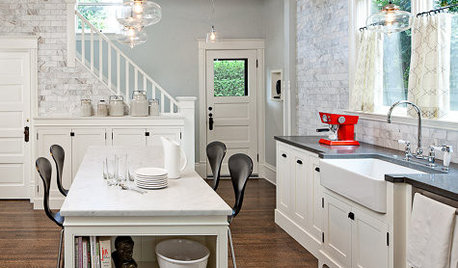Where are all the worms?
Ralph Thayer
9 years ago
Related Stories

GARDENING GUIDESHouzz TV: Make a Worm Bin for Rich Soil and Happy Plants
A worm-powered compost bin that can fit under a sink turns food scraps into a powerful amendment for your garden. Here’s how to make one
Full Story
REMODELING GUIDESWhere to Splurge, Where to Save in Your Remodel
Learn how to balance your budget and set priorities to get the home features you want with the least compromise
Full Story
HOME TECHHome Tech: Where Is My Robot Housekeeper?
We haven't mastered the all-purpose humanoid house cleaner, but these gadgets make quick work of chores
Full Story
MORE ROOMSTech in Design: Where to Put Your Flat-Screen TV
Popcorn, please: Enjoy all the new shows with a TV in the best place for viewing
Full Story

DECORATING GUIDESDenim by Design: Where the Jeans Always Fit
The Colors of Denim Add a Comfortable Feeling to All Kinds of Spaces
Full Story
GARDENING GUIDESNew Ways to Think About All That Mulch in the Garden
Before you go making a mountain out of a mulch hill, learn the facts about what your plants and soil really want
Full Story
KITCHEN DESIGNNew This Week: Moody Kitchens to Make You Rethink All-White
Not into the all-white fascination? Look to these kitchens for a glimpse of the dark side
Full Story
THE HARDWORKING HOMEWhere to Put the Laundry Room
The Hardworking Home: We weigh the pros and cons of washing your clothes in the basement, kitchen, bathroom and more
Full StoryMore Discussions







dottie_in_charlotte
Ralph ThayerOriginal Author
Related Professionals
Grand Haven Landscape Architects & Landscape Designers · Jennings Landscape Architects & Landscape Designers · Simi Valley Landscape Architects & Landscape Designers · East Patchogue Landscape Architects & Landscape Designers · Clearlake Landscape Contractors · Goodlettsville Landscape Contractors · Kaysville Landscape Contractors · Lantana Landscape Contractors · Parker Landscape Contractors · Seven Hills Landscape Contractors · Soddy Daisy Landscape Contractors · St. Louis Landscape Contractors · Sun City Center Landscape Contractors · The Woodlands Landscape Contractors · View Park-Windsor Hills Landscape Contractorsdottie_in_charlotte
Ralph ThayerOriginal Author
dottie_in_charlotte
timfox123